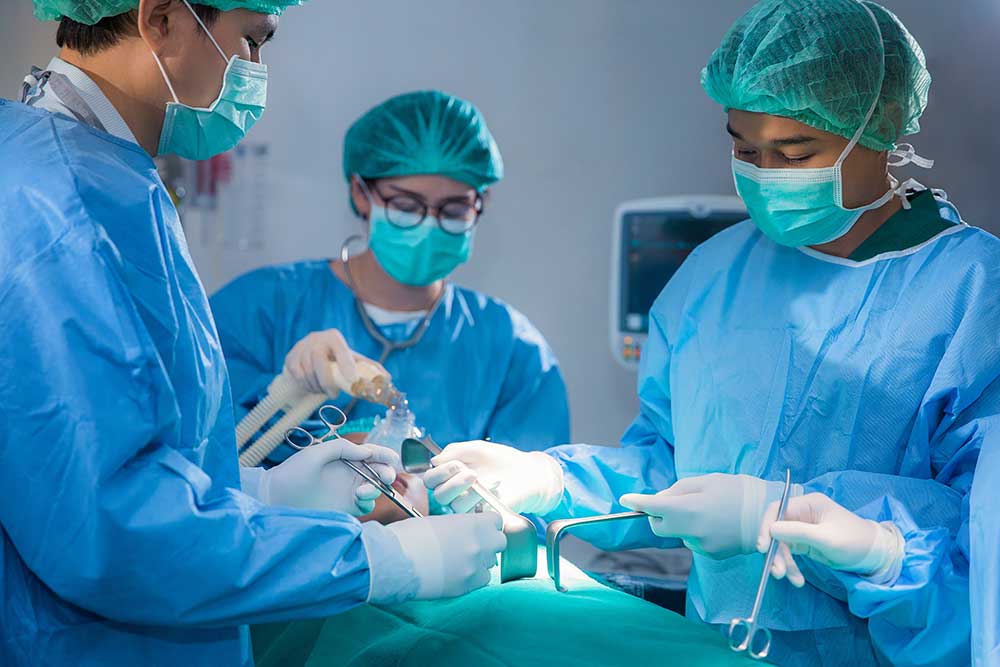Disclaimer: The information on our website is provided for general information purposes only. We make no representations or warranties of any kind, express or implied, about the completeness, accuracy, reliability, suitability or availability with respect to the website or the information contained on our website for any purpose. Any reliance on such information is therefore strictly at your own risk and we are not liable for any damages or losses arising out of or resulting from your reliance on any information contained on our website.
A surgical technologist (also known as an operating room tech, scrub tech, or surg tech) assists during an operation. Surgical technologists report to the surgeons, doctors, or specialists who lead the operating or surgical teams. Their primary responsibilities are confined to the operation room and during the surgical procedures. They assist in the set up, during the surgery, and clean up after the surgery in a variety of different ways.
Watch a video to learn what a surgical technologist does:
How to Become a Surgical Technologist
There are diploma programs, associate degrees, and certifications pertaining to surgical technology. These various options mean that you can find programs at a vocational school, college, or private institute. Vocational training programs that are usually short courses that run for a few months to a year. If you want to attend college, you can also earn an associate’s degree in as little as 2 years at a community college. Most degrees or programs include training and coursework in anatomy, medical terminology, pharmacology, technology, and equipment used in this profession.
Becoming Certified

Once the relevant training and skills are acquired a surgical technologist must become certified to work in this career field. The most common certification route is sitting for the Certified Surgical Technologist (CST) exam. According to the National Board of Surgical Technology and Surgical Assisting (NBSTSA) individuals that want to sit for this exam must graduate from a school accredited through the Commission of Accreditation of Allied Health Education Programs (CAAHEP). Therefore, it’s important to check with your program upon enrolling or inquire with the licensing board in your state prior to starting your studies.
There are other certification programs a surgical technologist can pursue as well such as Tech in Surgery, Certified (TS-C). This is awarded by the National Center for Competency Testing or NCCT, for more information go to their website.
In conclusion, becoming a Surgical Technologist offers a rapid entry into the healthcare field with several appealing benefits. The educational requirements typically involve completing a diploma or certificate program, which can be done in less than a year. This short timeframe allows you to quickly embark on a rewarding healthcare career.
Job Description of a Surgical Technologist
The job description of a surgical technologist can be varied and shall depend on the specializations that one has. For instance, a surgical technologist may assist surgeons in carrying out intensive surgeries of various parts of the body. In which case, a surgical technologist would need to be skilled in offering assistance to manage all kinds of medical equipment necessary for the procedure. A surgical technologist may also work at a dental clinic or a specialized medical facility, not necessary at a hospital.
According to the Bureau of Labor statistics most surgical technologists work in a hospital setting followed by outpatient facilities. A surgical technologist typically works forty hours a week. This may include nights, weekends, and emergency situations beyond normal scheduling. In addition, surgical technologists are on their feet for extended periods of time and frequently more than 8 hours at a time. Surgical technologists also encounter communicable diseases, exposure to internal and external body parts, and may smell foul odors during surgical procedures. However, advances in science and technology have definitely made it safer and less intrusive making the job a little easier.
If you have not done so yet, take a free career test and continue your research.
Article Citations
Bureau of Labor Statistics, U.S. Department of Labor, Occupational Outlook Handbook, Surgical Technologists.
National Center for O*NET Development. 29-2055.00. O*NET OnLine.
The career video is in the public domain from the U. S. Department of Labor, Employment and Training Administration.


